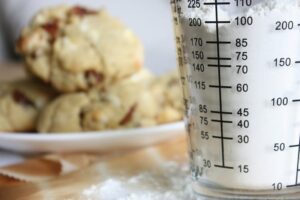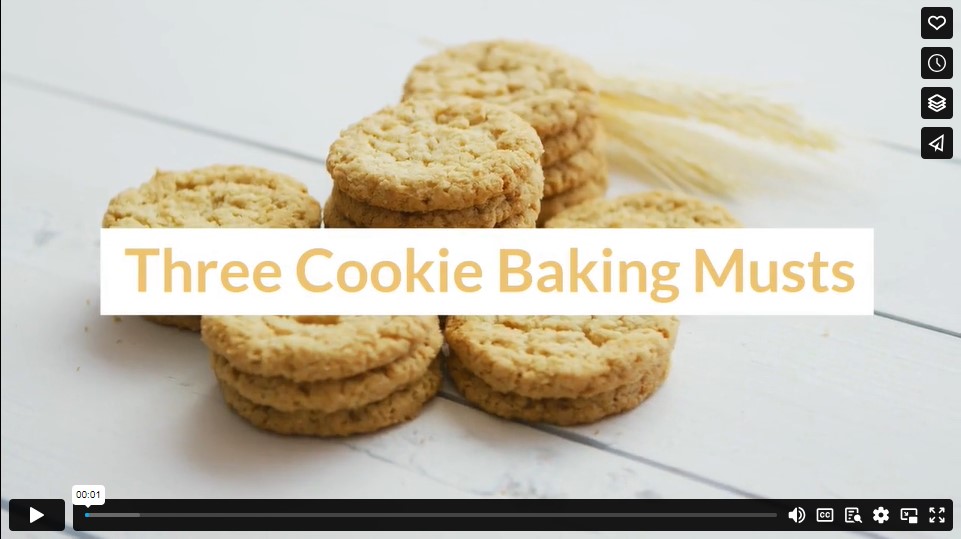Remember when you were a kid and your mom said things like:
“I wouldn’t do that if I were you.”
“Don’t you think it’s time to clean your room?”
“Let’s talk about this later.”
Those may sound like nice suggestions to some, but we know better.

(Morgane Perraud/unsplash)
Mom isn’t simply suggesting. She is telling the child what she is expecting of them. When a mom gives their child “suggestions” such as these, the child really ought to do exactly as she says. Otherwise, they will have to deal with the consequences.
Throughout your life, you will experience many different types of suggestions and advice. Everywhere you look, you can find tips on things such as parenting, schooling, marriage, etc. Baking is no exception. While baking may seem fairly straightforward, you will find many suggested tips and tricks.
It may be hard to know which suggestions are just passing fads and which are tried-and-true. Lucky for you, in this article, you will discover three cookie-baking tips that are more than mere suggestions; they are MUSTS.
Properly Measure Your Flour
One ingredient you will find in nearly all cookie recipes is flour. Flour serves as a thickener that provides structure to your cookies and binds the ingredients together. Flour can make or break your cookies.
Too much flour will result in thick, dry cookies that lack any real flavor. Too little flour will result in flat, crispy cookies that have lost their shape.
How can you ensure you use just the right amount of flour in your recipe? Measuring your flour properly is key to perfectly round, deliciously soft, gooey cookies. It’s one of the secrets to our popular cookie gift packages.
The best and most accurate way to measure flour is to weigh it using a kitchen scale (120 grams = 1 cup flour). Measuring by weight lets you be precise with the amount of flour so that your cookies will turn out just right.
If you don’t have a kitchen scale, you should definitely consider getting one. However, until then, measuring flour well enough to ensure your cookies don’t come out dry is still possible. To guarantee a good outcome, follow these simple tips.
First of all, use a dry measuring cup for your flour. Measuring flour in a liquid measuring cup is a big no-no. Doing so will almost guarantee too much flour in your cookie dough.
Before measuring, consider sifting your flour. Sifting is a great way to remove any lumps or air pockets. Sift more flour than you need into a bowl and then measure from there. If you don’t have a sifter, you can achieve similar results using a wire whisk or a fork to fluff your flour.
Use a spoon to add flour to your measuring cup until slightly above the rim. NEVER pack flour into a measuring cup unless you desire dry, crumbly, tasteless cookies. Use the flat side of a butter knife to gently scrape across the top of the cup, removing any excess.
Measuring this way will allow you to get pretty close to the exact measurement of the flour your cookie recipe calls for.
Preheat The Oven
Picture this: you just finished mixing up the perfect cookie dough. Everything was going smoothly. Your butter and eggs were at room temperature. Your measurements were spot-on, and you didn’t overmix.
Your parchment-lined cookie sheet topped with beautiful dough balls is ready to go into the oven. Then, it hits you. Oh no, the oven! You realize that you forgot to turn on the oven to allow it to preheat.
What should you do? Should you wait the agonizing 12-15 minutes for the oven to preheat? Or should you just pop them in the oven while it’s preheating? Is preheating the oven truly necessary? The answer is yes.
In fact, preheating your oven before putting anything in is one of the most crucial elements in the baking process. Preheating your oven allows it to reach the correct temperature to ensure your cookies bake properly.
A cold start in the oven will result in heavy, undercooked cookies. To ensure they bake all the way through, you will need to leave your cookies in the oven longer, which will likely cause them to be hard and dry.
Many cookie recipes call for chilling your dough in the fridge before baking. Placing your chilled dough in a preheated oven is the perfect combination. It allows for successful rising and browning and creates a desirable texture.
So, if you want those perfect dough balls to result in perfect cookies, sit back and wait until the oven is fully preheated.
Use Cooling Racks
When it comes to baking tools, some people see wire cooling racks as unnecessary. Maybe people assume that cooling cookies or other baked goods on a rack just adds more steps to the process and takes more time. Or, perhaps they just don’t like the idea of one more baking tool taking up space.
However, having a cooling rack on hand (and actually using it) will positively affect the outcome of your cookies. A cooling rack allows cookies to cool more quickly and evenly as air circulates the cookies.
Leaving cookies on a hot cookie sheet will cause them to continue to bake, leaving you with overdone cookies.
Depending on the recipe, the time for moving the cookies from the sheet to the cooling rack may vary. Some recipes require you to move the cookies immediately, while others state to let the cookies sit on the hot pan for a few minutes. Either way, a wire cooling rack must be the final step in baking cookies.
As with all choices we make, there will be consequences, good and bad. If you ignore these three baking suggestions, you will taste the resulting consequences in your less-than-ideal cookies.
On the other hand, if you adhere to these tips, your consequences will be utterly delicious! Follow our suggestions, just as you would Mom’s, and soon you’ll be baking gourmet cookies everyone will want.
Video

